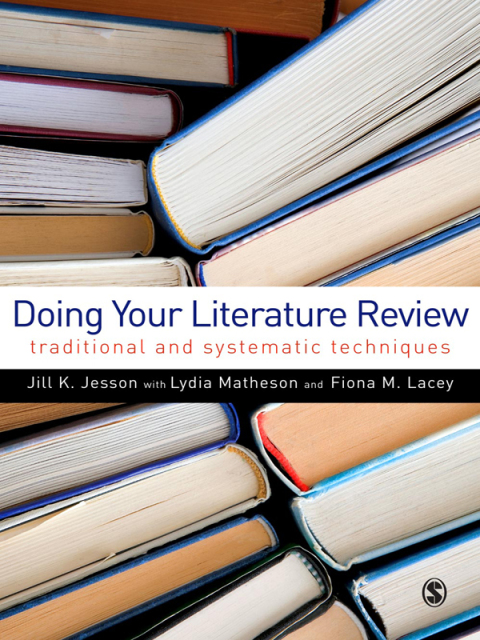Description
Efnisyfirlit
- Cover Page
- Title Page
- Copyright
- Contents
- About the Authors
- Acknowledgements
- Introduction
- Who is this book for?
- How is this book different?
- The rationale and history behind the contributions from researchers and from an information specialist
- Features of the book
- Layout of the book
- Part I Getting Information
- 1 Preliminaries
- What is a literature review?
- Terminology used in this book
- Different styles of review
- Two styles or approaches
- A critical approach
- Knowledge and literature
- Why and when will you need to review the literature?
- The research question and the literature review
- What is appropriate literature?
- Choosing which style of review: a traditional narrative review or a systematic review?
- Project management
- Summary
- 2 Searching For Information
- Introduction
- Developing online searches by identifying key words and creating a search record
- The range of information sources available for complex searches
- What do you need from a resource to make it appropriate for locating journal articles for your review?
- Summary
- 3 Reading Skills
- Introduction
- Be analytical in your reading
- Where to start
- Reading techniques – scan, skim and understand
- Reading different types of material
- Grey literature: non-academic sources and policy reports
- Recording and note-making
- Summary
- 4 From Making Notes to Writing
- Introduction
- Note-making
- From notes to writing
- Writing: critical writing and types of argument
- Making a value judgement and bias
- Summary
- PART II Using Information
- 5 The Traditional Review
- Overview of the debate
- Types of review: critical, conceptual state of the art, expert and scoping
- Drawing up an analytical framework – how to sort the material
- Moving to analysis and synthesis
- The presentation of your review
- Summarising the gap – dare to have an opinion
- Summary
- 6 Writing Up Your Review
- Overview
- A short summary
- A self-standing review
- Abstract, executive summary and annotated bibliography
- Writing the review
- Key words or phrases to help you move from stage 1 to stage 2
- The ‘so what?’ question, originality and making a value judgement
- Summary
- 7 The Systematic Review
- Overview
- Definitions
- Development of the review protocol
- Formulating the review question
- Documenting your progress
- Locating studies and sources of information
- Selecting studies: inclusion and exclusion criteria
- Appraisal – assessing the quality of research
- Data extraction
- Synthesis, drawing conclusions, what the review shows
- Evolving formats of systematic review
- Summary
- 8 Meta-Analysis
- Overview
- What is meta-analysis?
- Can I use meta-analysis to summarise the results of my systematic review?
- undertaking your meta-analysis
- Displaying the results of a meta-analysis
- Is your meta-analysis free from bias?
- Performing a sensitivity analysis
- Summary
- 9 Referencing And Plagiarism
- Introduction
- Why is referencing important?
- What do you need to reference?
- How many references should I provide?
- When and how to reference
- Referencing systems
- Where to find citation information you need
- Plagiarism
- Copyright
- Conclusion
- Summary
- Appendix 1: Further Reading
- Appendix 2: Critical Review Checklist
- Appendix 3: Systematic Review – Online Resources
- Appendix 4: Resources for Meta-analysis
- Glossary
- References
- Index







Reviews
There are no reviews yet.